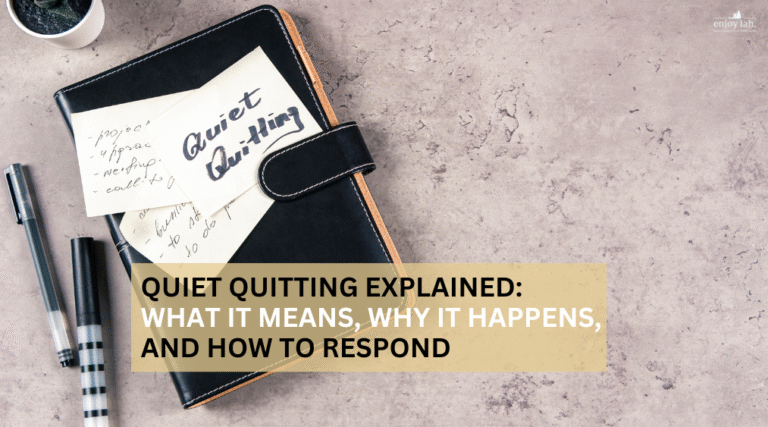Using ChatGPT prompts and AI tools is a way of life. But I started to realize that many people, including my own team, struggle to get the quality results they want. Why? Most of them treat AI like a simple Q&A platform and do not train hard on any question bots that they open. They probably did not realize that the quality of the answers depends on how they ask the questions and how they train their particular chatbot.
I started this guide discussion to explain how you can prompt to get good-quality results. If you are a slow techie, it’s okay; we can all learn together. I hope my sharing can help you unlock your full potential. Let’s discuss.
Common Missteps in Chatgpt Prompts
Chat AI platforms like ChatGPT have become go-to tools for everything from writing emails to brainstorming ideas. However, many users treat these tools like a search engine, asking one-off questions without context or follow-up. The result? Generic answers that don’t quite hit the mark.
I observe two common missteps here in Chatgpt Prompts. Some users tend to open new discussions whenever they want to ask something, even though they may be asking the same topic in a follow-up question after they asked the first one. Opening different threads, even on the same issues, will not give the chatbot enough context on what you are trying to learn.

The second misstep is that some users often ask generic questions without much context information, as if in a frequently asked question style. The quality of the output really depends on the quality of the input. Hence, you probably can only receive generic output if you ask generically.
Take, for example, asking, “Tell me about AI.” it might give you a broad overview, but it won’t help you understand how AI can solve your specific problem. This is where the craft of prompting comes in. By crafting clear, intentional prompts, you can get responses tailored to your needs—without the frustration.
What is Prompting, and Why Does It Matter?
Prompting is how you talk to AI tools like ChatGPT or DeepSeek. Think of it as giving clear, specific instructions to a brilliant assistant. The better your prompts, the better the results. But here’s the key: context matters. Without context, the AI has to guess what you’re looking for, which often leads to vague or irrelevant answers.
To put it into a layman’s understanding, imagine your AI Chatbot is your newly hired staff. If you need your staff to work, ask yourself if you have provided the right context on what the work is, how the work is going to be like, etc.
For slow techies, mastering this Chatgpt prompts skill means using AI tools in a mindful way that feels intentional and stress-free. It’s about thinking through what you want and how to ask for it rather than rushing through the process.
The SLOW TECH Prompting Framework for Chatgpt Prompts
I created a simple guide here on how to prompt with context. To help you craft better prompts, I have developed the SLOW TECH Prompting Framework. I chose Slow Tech because it’s easier to remember.
Each letter in “SLOW TECH” represents a key principle:
- [S] Specific: Be clear and precise about what you want.
- [L] Logical: Structure your prompt in a way that makes sense.
- [O] Open-Ended: Ask questions that encourage detailed responses.
- [W] With Context: Provide background information to guide the AI.
- [T] Task-Oriented: Clearly state the task or goal.
- [E] Examples: Include examples to clarify your request.
- [C] Concise: Keep your prompt short and to the point.
- [H] Human-Like: Write prompts as if you’re talking to a person.
How to Use the SLOW TECH Framework For Chatgpt Prompts
Let’s walk through a mock prompt tutorial for building a presentation to help you understand how the SLOW TECH framework works in practice. Imagine you’re tasked with creating a presentation on renewable energy. Here’s how you can craft a prompt using the SLOW TECH principles:
Mock Prompt Paragraph
I need to create a 10-minute presentation on renewable energy for a high school audience. Please provide a clear and concise overview of renewable energy, focusing on solar, wind, and hydropower. Start by defining renewable energy, then explain how each type works, and finally, discuss their benefits and challenges. What are the key advantages of renewable energy compared to fossil fuels? I’m presenting to students with no prior knowledge of the topic, so please use simple language and avoid technical jargon. Create an outline for the presentation with 3 main sections: Introduction, Types of Renewable Energy, and Benefits/Challenges. Use examples like solar panels on rooftops and wind farms to make the content relatable. Keep the response under 300 words. Explain this to me like I’m 15 years old.
Understanding this Prompt:
To master ChatGPT prompts, let’s break its down each letter of the framework and what it means in the mock prompt.
I need to create a 10-minute presentation on renewable energy for a high school audience.
[Specific] Please provide a clear and concise overview of renewable energy, focusing on solar, wind, and hydropower.
The prompt clearly states the goal (a 10-minute presentation) and the target audience (high school students).
[Logical flow] Start by defining renewable energy, then explain how each type works, and finally, discuss their benefits and challenges.
The request is structured in a logical sequence: define, explain, and discuss.
[Open-ended] What are the key advantages of renewable energy compared to fossil fuels?
The question about advantages encourages a detailed response.
[With context] I’m presenting to students with no prior knowledge of the topic, so please use simple language and avoid technical jargon.
The audience’s lack of prior knowledge is highlighted, ensuring the AI tailors its response.

[Task oriented] Create an outline for the presentation with 3 main sections: Introduction, Types of Renewable Energy, and Benefits/Challenges.
The request for an outline provides a clear task for the AI to complete.
[Example] Use examples like solar panels on rooftops and wind farms to make the content relatable.
Specific examples (solar panels, wind farms) make the content relatable.
[Concise] Keep the response under 300 words.
The word limit ensures the response is focused and easy to use.
[Human-like tone] Explain this to me like I’m 15 years old.
The tone is conversational and age-appropriate for the audience.
Example Output from the Mock Prompt
If you are putting contexture information requirements into your ChatGPT prompts, you will get good quality output. Here’s what the AI might generate based on the mock prompt:
Presentation Outline: Renewable Energy
1. Introduction
- Definition of renewable energy: Energy from sources that are naturally replenished, like sunlight, wind, and water.
- Importance: Renewable energy helps reduce greenhouse gas emissions and dependence on fossil fuels.
2. Types of Renewable Energy
- Solar Energy: Captured using solar panels on rooftops or solar farms. Example: Solar panels powering homes.
- Wind Energy: Generated by wind turbines in wind farms. Example: Large wind turbines in open fields.
- Hydropower: Produced by harnessing the energy of flowing water. Example: Dams generating electricity.
3. Benefits and Challenges
- Benefits: Cleaner energy, reduces pollution, and creates jobs.
- Challenges: High initial costs and dependence on weather conditions.
Conclusion: Renewable energy is a key solution for a sustainable future, but it requires investment and innovation to overcome challenges.”
Why This ChatGPT Prompts Guide Matters for Slow Techies
- Mindful Use of Technology: The SLOW TECH framework encourages you to slow down and think about what you want, leading to better outcomes.
- Learning at Your Own Pace: By practicing this framework, you’ll build confidence in using AI tools without feeling rushed or overwhelmed.
- Better Results: Clear, intentional prompts lead to more useful responses that align with your goals.
Final Thoughts
AI is here to help us. It is intelligence, but it still needs human copilot effort to drive a quality outcome. The SLOW TECH Prompting Framework is designed to help us use AI tools like ChatGPT and DeepSeek with intention and ease. By being Specific, Logical, Open-Ended, and so on, we can unlock the full potential of these tools without feeling overwhelmed.
So, start practising your Chatgpt Prompts, remember: slow and steady wins the race. Happy prompting!
You may be interested to also know how ChatGPT can be used in your daily life. Read this.








